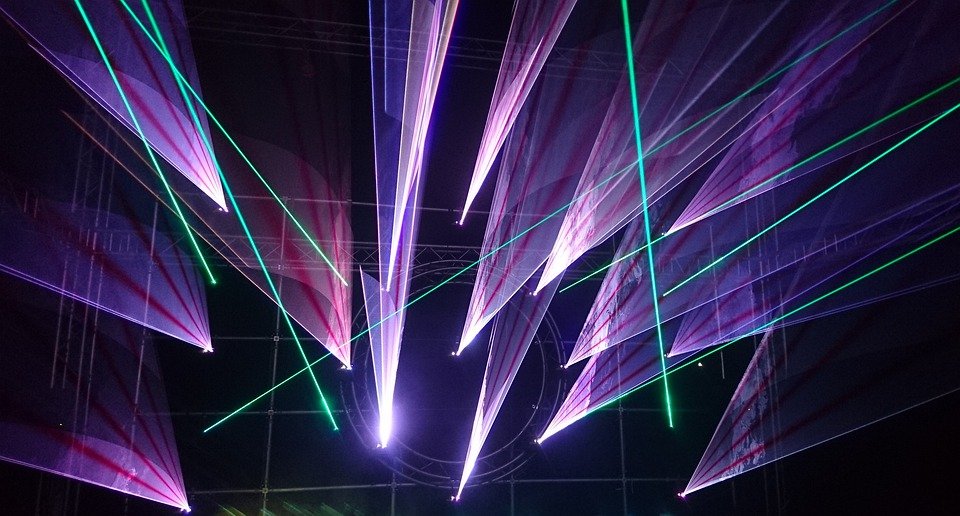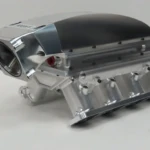Unleashing Creativity: 15 Expert-Approved Laser Cutting Crafts Combining Precision & Innovation
Laser cutting technology represents a remarkable fusion of computer-controlled optics and material science, enabling "contactless" fabrication for unparalleled precision. By focusing high-intensity light energy through CNC (Computer Numerical Control) systems, these machines vaporize or melt materials too hard for traditional cutting—typically excluding metals without specialized equipment. This non-contact process minimizes tool wear, reduces contamination, ensures exceptional repeatability, and preserves both machine and final product integrity.
Design & Engineering Fundamentals in Laser Cutting
- Material Constraints: Ideal for woods (3-6mm plywood/MDF), acrylics, leather, fabrics, paper, and select composites—each with specific laser absorption properties.
- Kerf Compensation: Sophisticated designs account for the material removed by the laser width (kerf) to ensure precise fits.
- Vector vs. Raster: Designs use vector paths for cuts (full penetration) and raster engraving for surface detailing.
- Joint Engineering: Finger joints, living hinges, and slot assemblies enable robust 3D structures from flat materials.
15 Transformative Laser Cutting Projects: Technical Breakdown
1. Sculpted Birch Towel Holder (165x165mm)
- Structural Insights: Precision-cut birch plywood leverages wood stain finishes for durability. Fusion360-designed finger joints create interlocking stability without adhesives.
- Material Note: 3mm Baltic birch offers optimal strength-to-weight ratio. Acrylic variants introduce moisture resistance.
- Functionality: Engineered for standard 165x165mm napkins, with internal ribbing to prevent collapse.
2. Optical Illusion Silhouette Vase
- Spatial Deception: Laser-cut wooden profiles (≤3mm) create contours mimicking solid vases through parallax effects and strategic layer shadowing.
- Material Pairing: Integrates borosilicate glass test tubes (heat/chemical resistant) within frameworks made of basswood or maple for contrast.
- Design Versatility: CAD constraints allow infinite silhouette variations while maintaining structural integrity.
3. Mathematical Spiral Bowl
- Algorithmic Design: Generated via parametric CAD scripts ensuring uniform tension distribution in the spiral.
- Engineering Choice: Two base types accommodate material thickness variances (3mm plywood or MDF recommended).
- Mechanical Strength: Concentric compression rings distribute load, preventing deformation under weight.
4. Pressure-Distributed Corner Chair
- Ergonomic Analysis: Angled backrest and seat optimize lumbar support. Geometric interlocking minimizes hardware.
- Structural Validation: Plywood grain orientation is critical to withstand torsional stress at joints.
- Space Efficiency: 90° triangular footprint maximizes corner utilization—ideal for small spaces.
5. Topographic Depth Map (Contour Modeling)
- GIS Data Integration: Elevation data converted to SVG contours via QGIS or dedicated plugins (e.g., TopoConverter).
- Layer Stacking Math: Precise Z-axis layer spacing (kerf-adjusted) achieves gradient slopes; relief maps may incorporate acrylic "water" layers.
- Material Selection: Baltic birch’s tight grain ensures clean, splinter-free edges at fine resolutions.
6. Impact-Resistant Toolbox
- Functional Engineering: Hammer-integrated handle design requires parametric CAD optimization to balance weight and grip force.
- Modular Storage: Finger-jointed compartments withstand vibration; removable dividers enable customization.
- Safety: Laser-etched labels enhance usability; plywood edges sealed against moisture ingress.
7. Tessellated Desk Organizer
- Space Partitioning: Voronoi pattern or parametric slotting optimizes pen/ruler placement friction.
- Critical Tolerance: 3mm material slots designed at 2.95mm for press-fit assembly requiring no glue.
- Anti-Tip Design: Weighted asymmetrical base counters leverage from loaded compartments.
8. Hydrodynamic Toy Sailboat
- Scale Modeling: Laser-cut plywood hull replicates Sunfish sailboat lines; hardwood mast resists bending.
- Fluid Dynamics: Undercut keel and balanced sail area ensure straight tracking. Brass hardware prevents corrosion.
- Assembly: Pinned construction allows disassembly; miniature hinges permit sail adjustment.
9. Strategic Chess Set
- Dual-Material Fabrication: Vector-cut board + 3D printed/engraved pieces enable dramatically contrasting visuals.
- Kinematic Design: Peg-and-hole bases stabilize pieces; felt underside reduces board abrasion.
- Expandability: Interlocking board sections allow tournament sizing (e.g., 20"x20").
10. RC Comet Tank Replica
- Historical Authenticity: Scaled from archival blueprints—suspend sliders, traverse turret, and working hatches.
- Moving Components: Laser-cut Acetal (POM) gears provide low-friction drivetrain; brass bushing supports track wheels.
- Electronics Integration: Cavities house servo motors/control units; acrylic access panels simplify maintenance.
11. USS Enterprise Sci-Fi Model (Star Trek)
- Nacelle Geometry: Compound-curved saucer/nacelles achieved via kerf-bent plywood or multi-layer laminate.
- Display Engineering: Illumination-ready with internal LED channels on translucent acrylic sections.
- Joinery: Over 100 precisely slotted parts; tolerance ±0.1mm ensures seamless assembly.
12. High-Velocity Jenga Launcher
- Newtonian Mechanics: Spring-loaded piston (PETG laser-cut) delivers controlled impulse ≈ 5N for targeted block extraction.
- Safety Engineering: Trigger lock prevents dry-firing; finger guards shield against pinch points.
- Behavioral Physics: Tuned spring coefficients avoid excessive force displacement reducing tower collapse probability.
13. Aerodynamic da Vinci Glider
- Historic Airfoils: Wing profiles replicate Codex sketches; laser-finished balsa minimizes drag.
- Flight Physics: CG (Center of Gravity) calibrated via adjustable tail ballast; wingspan-to-chord ratio ≥6:1 for stability.
- Workshop Scalable: File nesting optimizes material yield—ideal for STEM education.
14. Articulated Kinetic Fingertip Extension
- Biomechanics: Four-bar linkage converts wrist motion to finger extension; brass pivot joints ensure smooth articulation.
- Prototyping Iteration: ABS/Cardboard proofs verify stride length and grip posture before final hardwood cut.
- Ergonomic Testing: Pressure relief cutouts prevent nerve compression during use.
15. Resonance-Tuned Floral Swing
- Dynamic Load Analysis: Suspension chain angle optimized to dampen oscillation—critical for delicate plants.
- Aesthetic Dialect: Deep raster engraving on 5mm wood creates textured botanical motifs; MDF versions accept veneers.
- Biophilic Engineering: Non-toxic, UV-stable finishes ensure compatibility with indoor flora.
The Precision Revolution in Desktop Fabrication
These projects exemplify how laser cutting transforms CAD concepts into functional art through:
- Material Science Synergy: Matching wavelength absorption to substrate (e.g., CO2 lasers for organics, fiber lasers for metals)
- Computational Workflows: CAM path optimization reducing waste heat distortion
- Scalable Complexity: Enabling mass customization unachievable via injection molding
Emerging innovations like dynamic focal adjustment and multi-wavelength systems continue expanding feasibility frontiers. Whether crafting heirloom-quality decor, robust tool systems, or automotive-scale prototypes, laser technology empowers creators to reimagine physical form with scientific rigor—one precisely focused photon at a time.
"Laser cutting: Where photonic precision converges with Cartesian control to sculpt ideas into atoms."










































